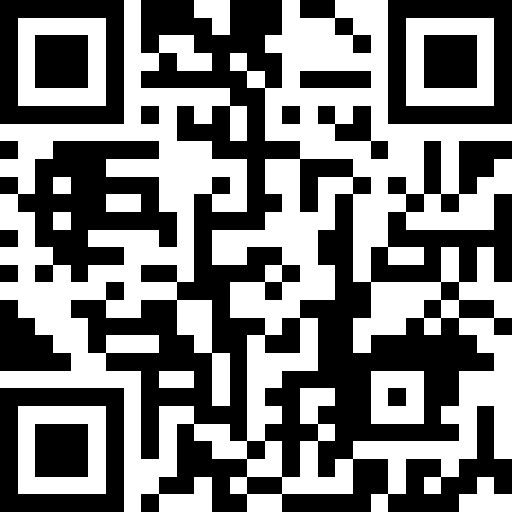Title Page
-
Project Name
-
Location
-
Date
-
Safety Manager
-
Superintendent
-
Weather Conditions
-
Trade Partners Onsite
-
Legal Disclaimer
Safety Survey
Office Site Safety
-
All workers currently on site have attended the required orientation?
-
Emergency Response, Evacuation Plans and rescue procedure in place, muster points posted in field.
-
Safety bulletin board with safe workdays posted and current safety information
-
Toolbox safety meetings held weekly?
-
Trade Partner "competent person" identified
-
What trade partners have competent persons onsite?
-
Weekly safety meetings held with Trade Partner's Competent Person
-
SDSs provided and maintained in field office
-
JHA's are completed as needed/required
-
All PTSPs completed as needed/required.
-
Emergency phone numbers posted in office areas and field.
-
Drinking water available
-
Toilet facilities available, accessible, and clean
House Keeping
-
Trade Partners inspect and clean work areas daily. (Clean as you work)
-
Walking surfaces clear, clean, trip hazard eliminated. Emergency routes through the construction area free of obstacles and marked in the field
-
Trash/construction debris emptied regularly, disposal area neat, receptacles available
-
Nails, scrap metal/wood, water bottles/cans picked up from previous days
-
Materials storage, proper segregation, stacked properly, chocked, no danger of falling
PPE
-
Hard hats, safety glasses, high visibility vests / clothing and safety footwear worn by craft / management
-
Safety glasses with secure side shields being worn if needed.
-
Face shields/goggles worn where appropriate
-
Hearing protection used where appropriate
-
Glove Program in effect and worn where needed
-
Respirators/dust masks worn where appropriate, program in place, fit test, etc. (Fit tests must be completed by Trade Partner)
Fall Protection
-
Are fall hazards present on the project?
- Yes
- No
-
Are falls 6 feet and greater being protected?
-
Are personal fall arrest/ restrain systems being used?
-
Adequate full body harnesses are being worn?
-
Are the full body harnesses being worn correctly?
-
All fall protection equipment is in good shape and being inspected prior to every use?
-
Anchorage points for fall arrest meet required ratings
-
Lanyards with correct shock absorbers and or retractable device and double locking clips - Ensure Fall risk and distance has been established
-
Perimeter guarding provided, perimeter cables or wire rope properly installed
-
Are controlled access zones adequately barricaded/signage to identify fall protection hazard. i.e. debris chutes
-
Are all Holes greater than 2" adequately protected?
Site Safety
-
Flaggers for mobile equipment movements
-
Containers, Chemical materials labeled (labels legible)
-
Fuels, flammable materials stored properly
-
Evacuation routes are foreseen of (temporary) emergency signage and orientation lighting (min. 5 Lux). Adequate task lighting provided as appropriate
-
Equipment/tools in good working condition and guards in place where needed
-
"Auto kill switch" at handle on grinders
-
Are all impalement Hazards protected? Impalement caps installed
Ladders / Stairs
-
Proper type of ladder being used
-
Ladders are inspected daily?
-
Are ladders being stored properly?
-
Conductive (metal) ladders not in use near electrical panels/rooms.
-
Extension ladders tied off, and/or footed and secure, extended 36" above landing, 4/1 slope maintained
-
Workers not using top two steps on ladders
-
Stairs provided where needed >19", secured
-
Stairs greater than 4 risers are equipped with a handrail?
-
Safe access/egress for the stairs, material being stored on the stairs?
-
Have the pan stairs been poured/filled to prevent a tripping hazard?
Scaffolding
-
Scaffolding being used onsite?
-
All workers have been trained?
-
What type of scaffolding system is being used on the project?
-
Is the scaffolding built correctly, safe, and secured?
-
Scaffold planking overlaps 12"
-
Safe access/egress for scaffolds
-
Working platforms at least 2 feet wide?
-
All workers are protected from falls from scaffold by guardrail?
-
Are workers below protected from falling hazards?
-
Are materials being dispersed immediately after being loaded?
-
Is the working surface clear of redundant materials?
-
Is the scaffolding being tagged properly and inspected daily?
-
All workers, working from the scaffolding have been trained by a qualified person?
-
All workers erecting, disassembling, moving, operating, repairing, maintaining, or inspecting a scaffold have been trained by a competent person?
Welding and Cutting
-
Hot Work taking place onsite?
-
Hot work permit in use, hot work watch established?
-
Compressed gas cylinders secured with chain or wire?
-
Cylinders capped when not in use?
-
Oxygen and flammable gas cylinders kept 20 feet apart or approved 1/2 hour fire wall separation
-
Torch, hoses, gauges, regulators and cables in good condition. Torch equipped with flashback regula
-
No combustible material in vicinity of hot work
-
Welding screens used where needed
-
Fire Extinguisher within 25 feet of hot work?
Lifting and Rigging
-
Lifting and Rigging operations onsite?
-
PTSP approved?
-
PTSP conference held onsite?
-
Swing radius protected at all time?
-
Daily and annual crane inspection documented?
-
Operator certification on hand?
-
Certified Rigger?
-
Qualified Signal Person?
-
What communication methods are being utilized?
-
Pre-lift checklist completed?
-
Rigging equipment inspected prior to use, used properly,
-
Tag lines used to control loads
-
Is the ground stable?
-
Mud mats required?
Excavation and Confined Space
-
Trenches and excavations onsite?
-
Soil classification identified
-
What is the soil classification?
-
Describe the methods used to classify the soil?
-
Trenches/excavations sloped properly or shored and barricaded
-
Adequate access in/out of excavations (max. 25')
-
Spoils, tools, paving materials etc. kept 3 feet back from excavation edge
-
Confined spaces work present onsite at time of the inspection?
-
Confined Space: Air monitoring (including continuous) performed
-
Permit Required Confined Space: Testing/monitoring results noted on the permit.
-
Ventilation being utilized?
-
What testing / air monitoring system is being utilized?
-
Permit Required Confined Space: Personnel properly trained
-
Permit Required Confined Space: Retrieval equipment available and used appropriately
-
Permit Required Confined Space: Standby attendant(s) present, communication means available
Motorized Equipment
-
Motorized equipment being used onsite?
-
Operators are trained to operate?
-
Proper inspections performed/documented?
-
Rollover protection in place and maintained?
-
Equipment used safely?
-
Backup alarms, horns are in working order?
-
Seatbelts used by all operators?
Electrical Safety
-
All extension cords have been inspected prior to the start of work?
-
Cords in good condition, no cuts or repairs w/ tape Cables secured (through doorways etc.), and off floor as much as possible to minimize trip hazard
-
Power cords protected where routing through chases, doorways, floor openings, etc. All extension cords shall be elevated and not on the floor.
-
GFCIs used for lead cords, GFCIs tested monthly
-
Grounding in working order on power tools, equipment
-
Temp electrical panels labeled, grounded and secured.
-
Conduit tightly connected to junction/outlet box, all breakers labeled and field outlets w/ circuit #
-
Adequate illumination 5' candles
-
Temporary wiring; power/lighting isolated from building structure and not presenting trip hazard
-
Precautions taken where overhead lines are present, No Work within min 20' clear
Approval
-
Date and time of approval
-
Approver's signature













